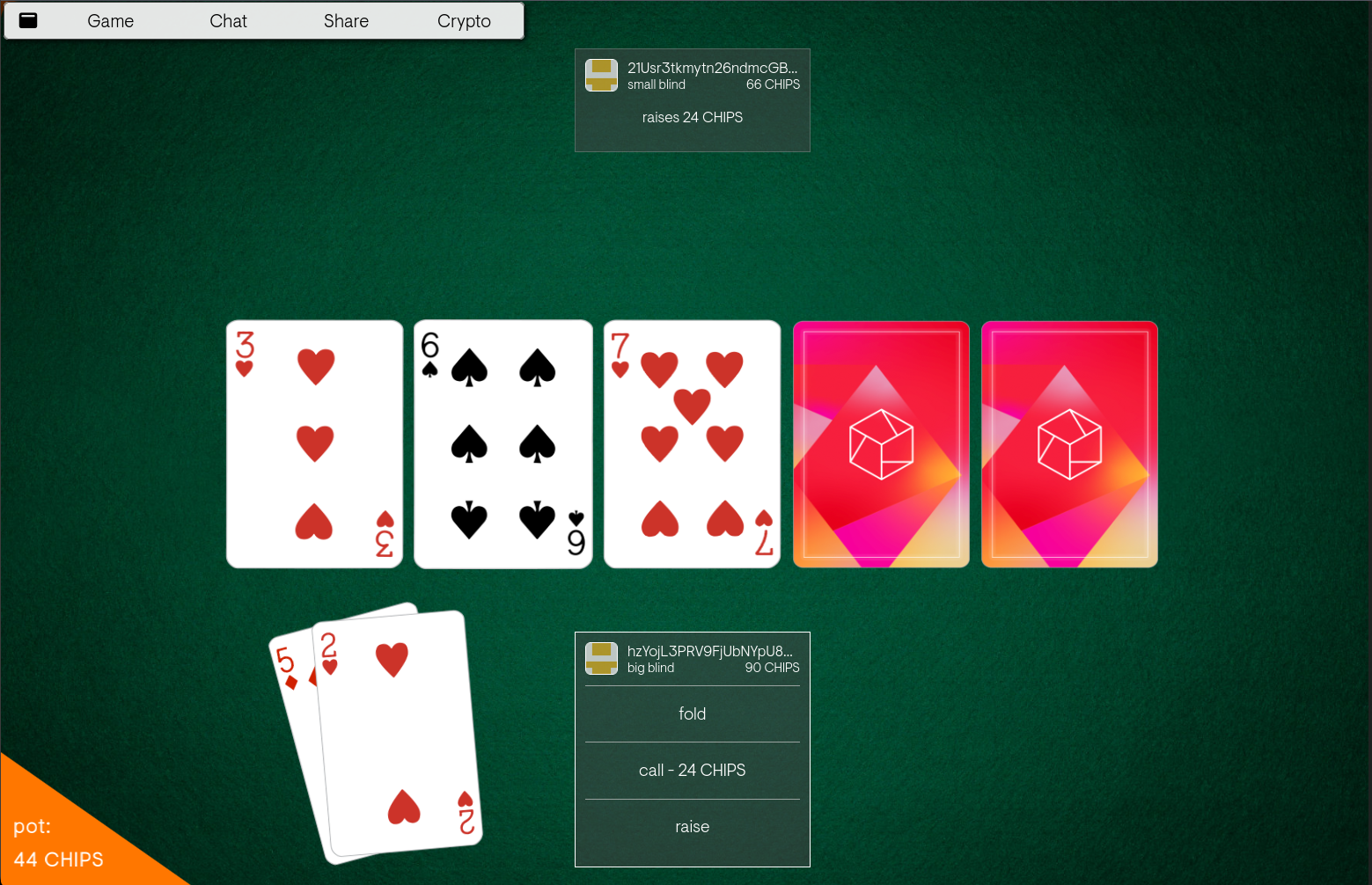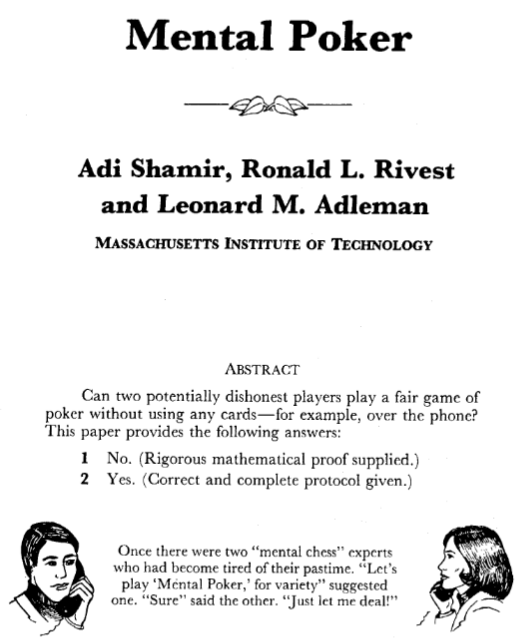¶ Poker

Saito Poker is an implementation of Texas Hold'em Poker that uses advanced cryptographic techniques to allow players to play the game in a provably-fair fashion without the need for a trusted third-party. It was the initial proof of concept for Saito Web 3 Gaming and paved the way for a wide variety of games.
Saito Poker supports P2P crypto wagers that settle between hands - no custodian or middleman is required.
- Poker source code.
¶ How it Works
Gameplay happens directly peer-to-peer, without the need for a central server to connect players or mediate disputes. This makes Saito Poker fundamentally different from other “web3” poker implementations where players use cryptocurrencies to make wagers, but which still. rely on centralized servers or trusted third-parties to deal cards, manage bets, and handle payouts.
The cryptographic techniques used to secure gameplay are provided by the Saito Game Engine and include techniques like [mental poker](https://en.wikipedia.org/wiki/Mental_poker), as described by Adi Shamir, Ronald L. Rivest and Leanard M. Adleman – the inventors of public key cryptography. These techniques exploit the commutative properties of public key encryption schemes to encrypt cards in a way they cannot be dealt from the deck without the consent of all players.

Saito Poker is under development but already supports most features needed for a fun game. Players can join or leave tables, and easily stake real-world cryptocurrencies.